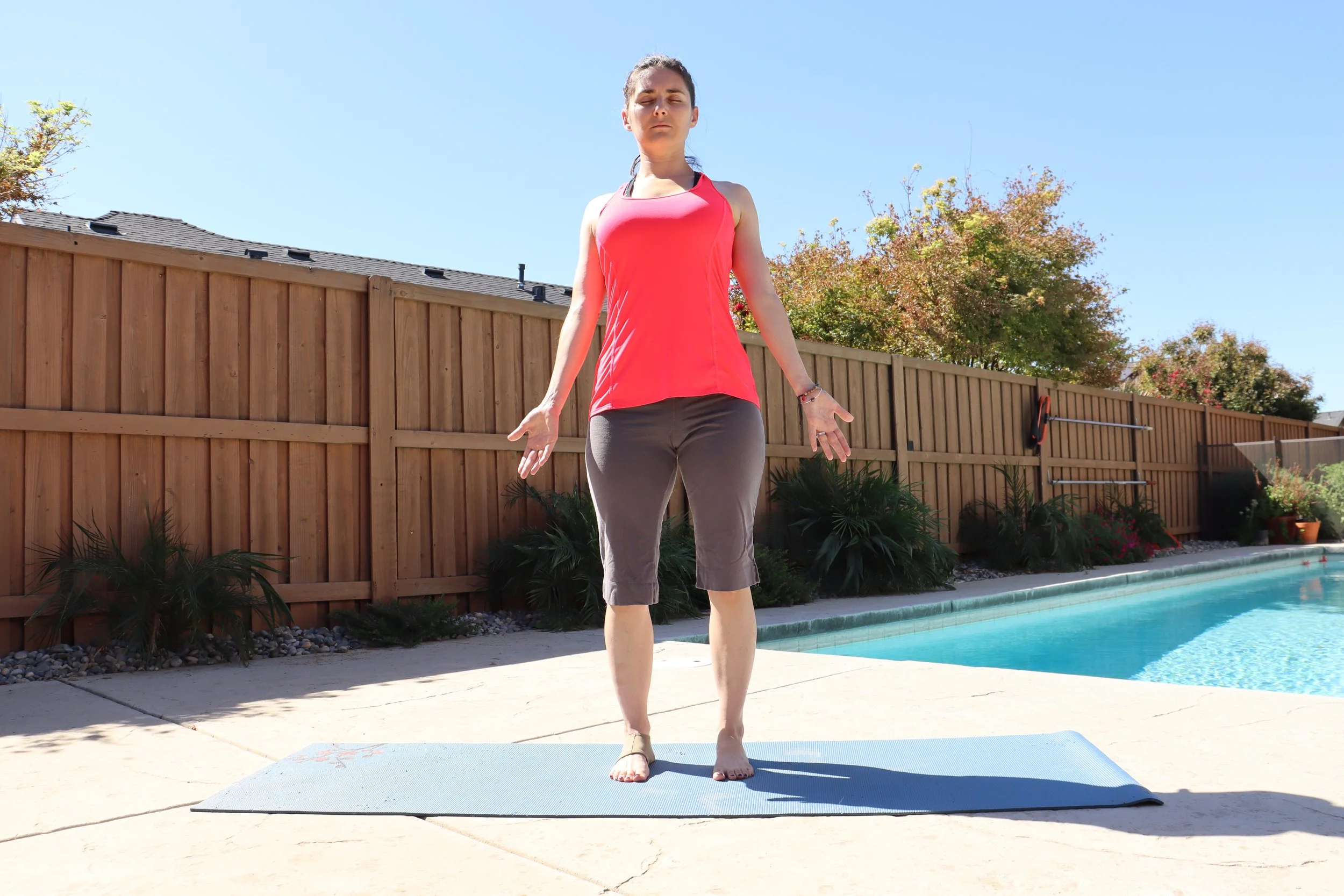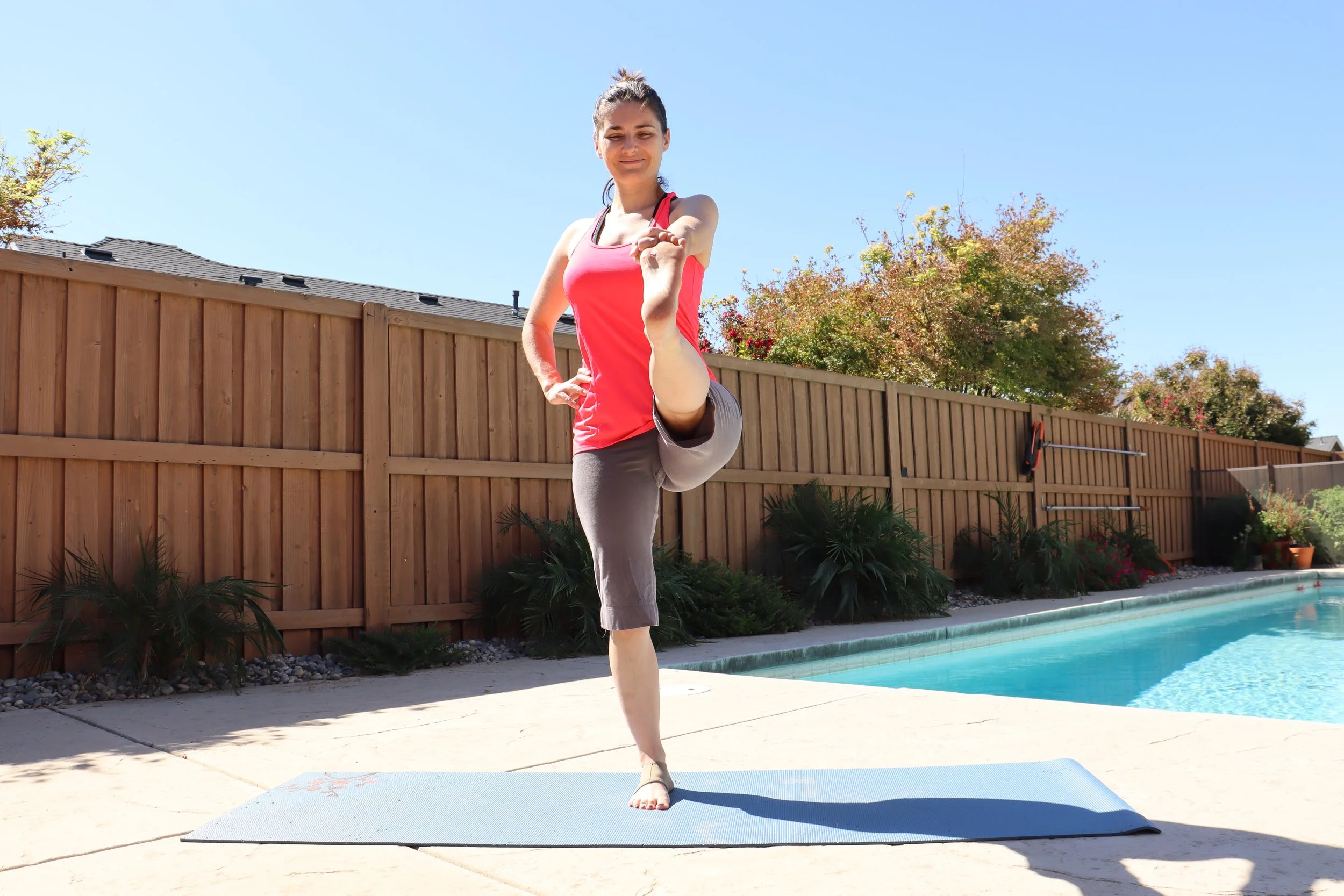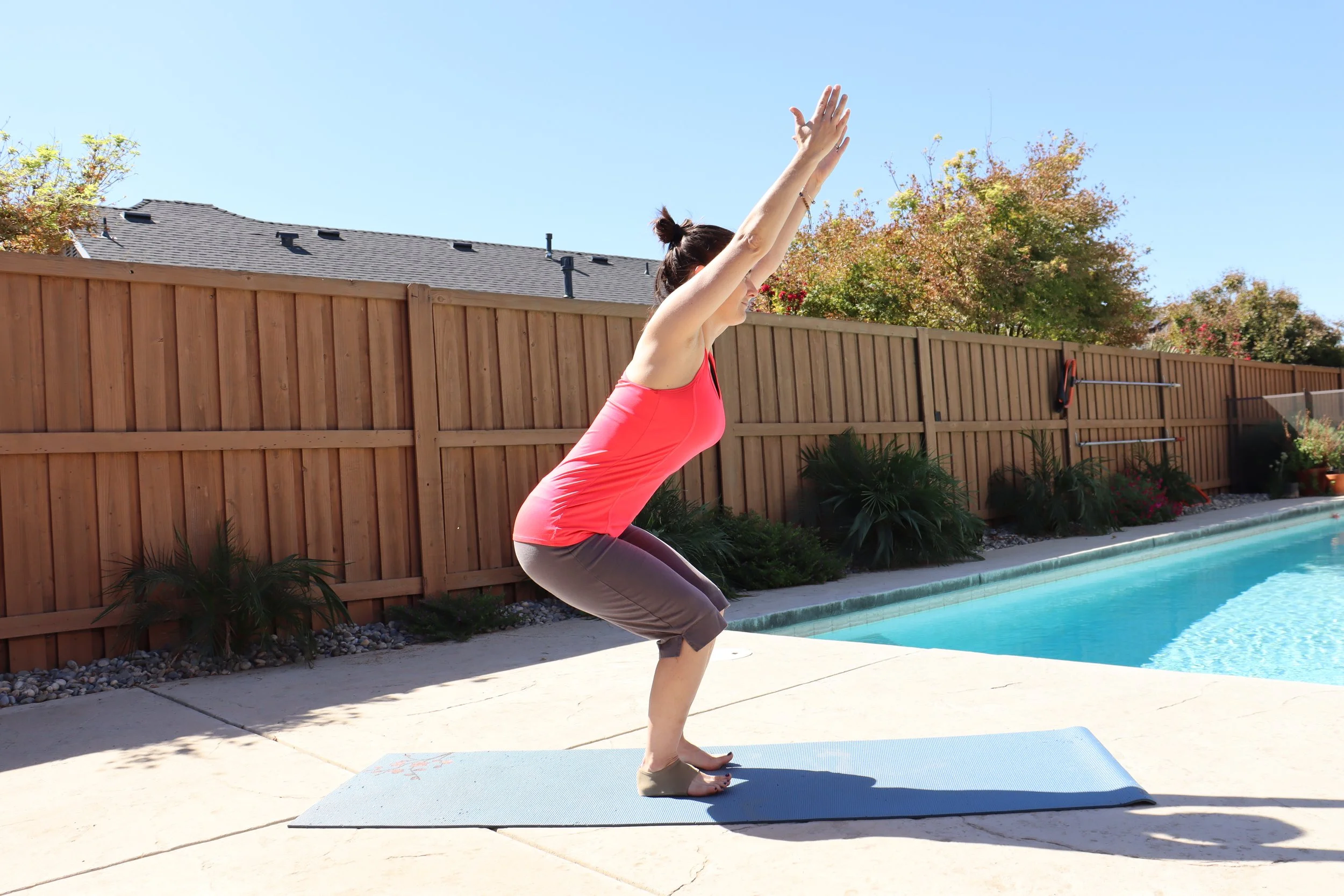Best yoga poses for improving balance with scoliosis or leg-length discrepancy
/Yoga is a great method for improving balance, especially for those suffering from scoliosis or leg-length discrepancy (LLD). This post is adapted from my post “Five best yoga poses for improving balance,” specifically to account for inherent body asymmetries that arise from these conditions.
Scoliosis and LLD can lead to balance and proprioception challenges, not only because of the physical effects of one side being more curved or longer than the other, but also because nerves are affected. The sensations you feel on each side, and in, your body can be distorted. This makes practicing and improving your balance especially important. Though balancing poses on one leg are beneficial for those with scoliosis or LLD, function is more valuable. For me, the key to balance isn’t centered on being able to do a particular pose, but rather to have the requisite physical and functional ability—components that are crucial to having an active life, mobility, and a reduced chance of injury.
Oftentimes injuries related to balance occur during routine transitions or movement—stepping up onto a curb, turning to grab something you just forgot, or stretching for something just out of reach. Such incidents occur when your body hasn’t fully adapted to a new position. And considering scoliosis and LLD can affect your understanding of where your body is in space, such everyday movements can be more complicated to perform.
These five yoga poses help you improve your balance and prepare for life’s transitions. In addition to these poses, there is a mindfulness component to balance and transitions. Slowing things down and being more aware of your experience will help you better maintain your balance and give your body and mind a chance to prepare for new body positions, planes, and situations.
Mountain Pose (Tadasana)
This is the foundational pose for all of yoga, and it is the HARDEST pose for me. In addition to being a key yoga pose, it is the most functional position that we can have and the one that should be practiced the most. Standing and trying to balance evenly between both sides of your body can be uncomfortable, because you are naturally tilting to one side and making adjustments to compensate for asymmetries. Doing this pose against a wall is a great way to sense the differences between each side of your body—something I demonstrate in my Mountain Pose post.
In Mountain Pose you can see asymmetries. Use a wall, mirror, or take a picture to feel or see where you are uneven
How to do it:
1. Stand with your big toes together, your heels slightly apart, or with your feet hip-width apart.
2. Feel your weight grounding into the four corners of your feet and, in contrast, pull your arches up away from the floor.
3. Activate your legs by pulling the front of your thighs and knees up toward your hips; also pull in your lower abdominals by bringing your hip points and lower ribs toward each other. Lengthen your spine from your sacrum to the crown of your head and broaden the front of your chest by pulling your shoulders back.
4. Externally rotate your upper arms so the insides of your arms face away from your torso. Stay here for five breaths.
Hand-to-Big-Toe Pose (Hasta Padangusthasana)
This is a one-legged pose and that helps you practice balancing, but the reason why I like it (more than say Tree Pose) is that the actions involved are more natural and common in everyday life. We lift our knees up in front of us when climbing stairs or stepping up onto a curb, for example. So, it is important to practice this motion when trying to improve balance and stability. Be mindful of keeping your hips level in this pose. This is a good opportunity to practice an evenness that you may not generally have.
How to do it:
1. From standing, begin to put your weight onto your left foot, lifting your right heal.
2. Engage your abdominal muscles to brace your core and slowly lift your right thigh up to hip level.
3. You can keep your knee bent with your hands under your thigh or extend your leg and, if possible, grab your right big toe with your right fore- and middle fingers.
4. Your left hand can rest on your hip or hold a chair or wall for extra support. After holding the pose for 5 breaths, switch legs.
Chair Pose (Utkatasana)
Chair Pose strengthens the legs and core muscles while helping you practice an everyday movement. The transition to and from a seated position can pose a risk for losing balance and injury.
You can practice this pose with the help of a chair or wall and you don’t have to bend your knees deeply. Focus on finding steadiness while going in and out of the pose, and hold it for a couple of breaths.
How to do it:
1. Standing with feet together or hip-width apart, bend your knees, bringing your hips behind you (not under you).
2. Bring your arms up by your ears or hold onto a chair or wall. Your chest will hinge forward some; try to keep your shoulders pulling down and back so your back doesn’t round forward and keep your knees aligned above your ankles. Hold for five breaths.
Crescent Pose/High Lunge (Ashta Chandrasana)
This is my favorite pose for balance. The body is in an asymmetric position, with one leg forward and bent and one leg back and straight with the heel up. The legs are moving away from your body in two directions and the back heel being up creates some instability. The more your appendages move away from the body, the more your core muscles need to help stabilize your center.
In this pose the knee of your tighter hip may be more bent when extended behind you (the right in my case)
There are several variations in this pose that allow you to challenge your balance. You can practice this pose with a hand on a wall or chair, you can keep both hands on your hips instead of raising them by your ears, or you can twist toward the side with the forward, bent leg.
How to do it:
1. From standing, step your right foot back several feet behind you, your legs still aligned with your hips and both hip points facing forward.
2. Begin to bend the front knee, keeping it aligned over your ankle, and your back leg straight. The back right heel will be off the ground, with just your toes and ball of your foot to stabilize you.
3. You can raise your arms by your ears or hold onto a chair or wall.
4. Spend five breaths here before stepping your back leg forward and switching to the other side.
Bird-Dog Pose/Balancing Table (Dandayamna Bharmanasana)
While this isn’t a standing balance pose, it is very effective for improving core strength (which is necessary for good balance) and maintaining stability while on hands and knees. It is important for everyday function to be able to get up and down from the floor (for example) with stability and this is the best pose to practice that. When working with asymmetries this pose is great to do with your back foot against the wall—you can see how my pregnancy and scoliosis post.
How to do it:
1. Come to a quadruped position, with shoulders aligned over wrists and hips over knees. Raise your right leg, keeping your hips level. Try to prevent collapsing down through your shoulders, torso, and hips. The concave side (longer leg side) will likely collapse some here.
2. If you feel stable, raise your left arm as well, extending it forward by your ear and keeping your shoulders level. Extend through the raised hand and your heel, lengthening your body.
3. Lower your arm and leg down back to neutral quadruped position then repeat on the other side, raising your left foot and right arm. You can hold each side for several breaths and practice several repetitions on each side to build strength and stability.






